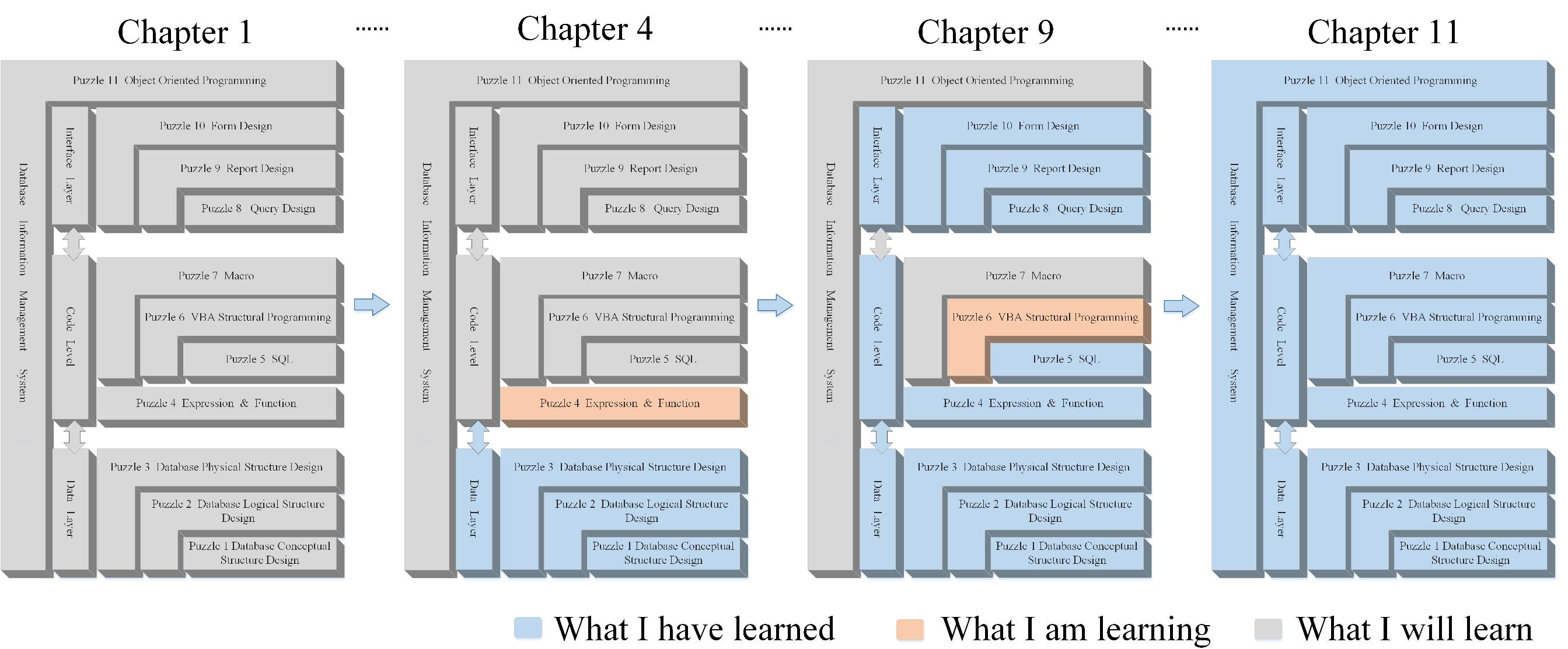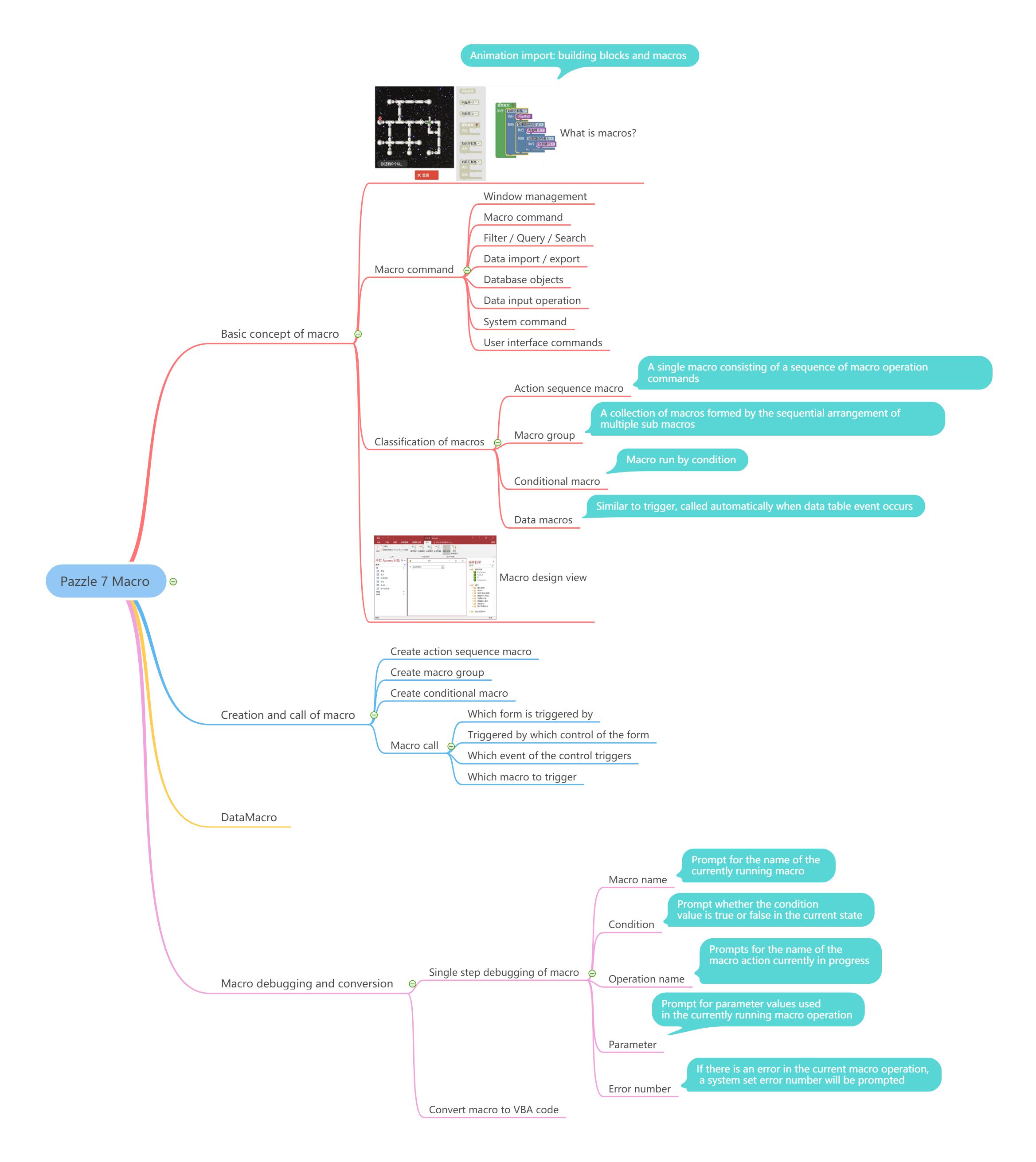1. Combining with the teaching objectives of the course, the hierarchical module of the database system in software engineering is decomposed into Knowledge Point Puzzle. Each piece of the puzzle is corresponding to a module in the development of the database application system. The teaching route of knowledge point puzzles enables learners to grasp the hierarchical structure of knowledge points as a whole and clearly understand the internal relationship between the puzzles. In the process of learning, learners gradually unlock the new puzzle module, associate with the next level of knowledge points, to construct the whole knowledge structure of the course in a progressive way.

Knowledge Point Puzzle of course
2. The "Learning Roadmap" is consist of Knowledge Point Puzzle, which takes learners as the center and identify the phased learning objectives. At the beginning of each chapter, learners are told which puzzle they have unlocked, and they can know "What I have learned (blue puzzle)", "What I am learning (orange puzzle)", and "What I will learn (gray puzzle)".

3. The design of the mind map for each Knowledge Point Puzzle and the formation of link relationships are helpful to improve the whole curriculum knowledge system. It makes the study and review clearer by sorting the knowledge hierarchy of each chapter and establishing the curriculum system in the way of the mind map. Also, it is necessary to design an interactive learning guide and make a perfect learning plan for each puzzle.

Technology Sharing Collection
Chapter Ⅰ Data Management Technology – Database
1.1 Data & Data Management
1.2 Database System
Chapter Ⅱ Database Conceptual & Logical Structure Design
2.1 Database Design
2.2 Conceptual Structure Design
2.3 Logical Structure Design
Chapter Ⅲ Database Physical Structure Design and Maintenance
3.1 Create Databases
3.2 Create Tables
3.3 Maintain Tables
Chapter Ⅳ Constants, Variables, Expressions, and Functions
4.1 Data Types, Constants and Variables
4.2 Expressions
4.3 Functions
Chapter Ⅴ Data Retrieval and Query Files
5.1 Query and Query Files
5.2 Select Query
5.3 Operation Query
Chapter Ⅵ Structured Query Language - SQL
6.1 Summary Of SQL
6.2 Data Definition Language
6.3 Data Query Language
6.4 Data Manipulation Language
Chapter Ⅶ Forms and Report Design
7.1 Form Design
7.2 Report Design
Chapter Ⅷ Structured Programming
8.1 VBA Programming
8.2 Sequence Structure
8.3 Selection Structure
8.4 Repetition Structure
8.5 Functions & Procedures
8.6 VBA Debug
8.7 Arrays
Chapter Ⅸ Object - Oriented Programming(OOP)
9.1 What is OOP?
9.2 Properties, Methods and Events
9.3 OOP Examples
Chapter Ⅹ Macro
10.1 What is a Macro?
10.2 Create Macros
10.3 Debugging and Conversion of Macro
Chapter Ⅻ Development of Desktop Database Application System
11.1 Requirement Analysis of Database Application System
11.2 Data Layer of Database Application System
11.3 Realization of Database Application System
11.4 Test and Release of Database Application System
Final Exam


